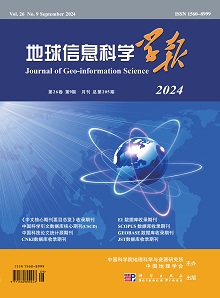“三江源”地区高寒草甸不同退化程度的光谱分析
引用次数: 4
摘要
青海省“三江源”地区是长江、黄河、澜沧江的源头。这里的生态系统以草地为主,草地类型以高寒草甸为主。近30年来,三江源区大量草地退化,监测高寒草甸退化情况对三江源区草地保护具有重要意义。不同退化程度下高寒草甸的光谱特征为高寒草甸分类和退化遥感监测提供了有价值的信息。本研究于2009年8月在青海“三江源”地区对3种不同退化程度的高寒草甸进行了地面光谱数据测量和草样调查。然后提取并分析了采集到的光谱数据的四个特征值:557675和760纳米处的反射率和红边斜率。结果表明:3种高寒草甸在5个退化程度下的557纳米反射率差异不大,但675纳米反射率、760纳米反射率和红边坡度差异明显。我们可以区分出3种不同退化程度的高寒草甸,并根据这些差异进行有效的监测。基于高寒草甸光谱数据,计算了高寒草甸5种退化程度下的归一化植被指数(NDVI),并将其与地上生物量进行了关联。结果表明:不同退化程度的高寒草甸地上生物量与其“红边”坡度和NDVI的决定系数分别为0.93和0.87。因此,这两个参数对基于遥感数据的地上生物量估算是有用的。高寒草甸“红边”坡度反射率不仅能有效区分5个退化程度的3种高寒草甸,而且与地上生物量的关系优于NDVI值。因此,高寒草甸“红边”坡度反射率对高寒草甸分类、退化监测和生物量估算具有重要意义。本文章由计算机程序翻译,如有差异,请以英文原文为准。
Spectral Analysis of Different Degradation Level Alpine Meadows in 'Three-River Headwater' Region
The 'Three-River Headwater' region at Qinghai Province is the source region of Yangtze River,Yellow River and Lancangjiang River.At here,grassland is the predominate ecosystem and alpine meadow is the main grassland type.In recent 30 years,large amount of grassland in this area suffered degradation,and therefore monitoring the alpine meadow degradation is important for grassland protection in the 'Three-River Headwater' region.The spectral characteristics of alpine meadow at different degradation levels are valuable information for alpine meadow classification and degradation monitoring through remote sensing.In this study,we measured the ground spectral data and surveyed grass samples in three sorts of alpine meadows at five degradation levels in August 2009 at the 'Three-River Headwaters' Region,Qinghai Province.Then we extracted and analyzed four characteristic values of the collected spectral data: the reflectance at 557675 and 760 nanometer and the red edge slopes.The result indicates that there are little differences among 557 nanometer's reflectance of the three sorts of alpine meadows at five degradation levels,but there are obvious differences among 675 nanometer's reflectance,760 nanometer's reflectance and the red edge slopes.We could distinguish the three sorts of alpine meadows at five degradation levels and make effective monitoring according to those differences.We also calculated the normalized differential vegetation index(NDVI) value of alpine meadow at five degradation levels based on their spectral data and related them with above ground biomass in this study.The result suggests that above ground biomass of alpine meadows at different degradation levels are well related to its 'red edge' slope and NDVI,with the determination coefficient of 0.93 and 0.87 respectively.Thus,these two parameters are useful for above ground biomass estimation based on remote sensing data.The 'red edge' slope of alpine meadows' reflectance not only could distinguish the three sorts of alpine meadows at five degradation levels effectively,but also has a better relationship with above ground biomass than NDVI value.Thus,'red edge' slope of alpine meadows' reflectance is essential for alpine meadows classification,degradation monitoring and biomass estimation.
求助全文
通过发布文献求助,成功后即可免费获取论文全文。
去求助
来源期刊
CiteScore
2.70
自引率
0.00%
发文量
3757
期刊介绍:
Journal of Geo-Information Science is an academic journal under the supervision of Chinese Academy of Sciences, jointly sponsored by Institute of Geographic Sciences and Resources, Chinese Academy of Sciences and Chinese Geographical Society, and also co-sponsored by State Key Laboratory of Resource and Environmental Information System, Key Laboratory of Virtual Geographic Environment of Ministry of Education and Key Laboratory of 3D Information Acquisition and Application of Ministry of Education. Founded in 1996, it is openly circulated in the form of a monthly magazine.
Journal of Geoinformation Science focuses on publishing academic papers with geographic system information flow as the main research object, covering research topics such as geographic information cognitive theory, geospatial big data mining, geospatial intelligent analysis, etc., and pays special attention to the innovative results of theoretical methods in geoinformation science. The journal is aimed at scientific researchers, engineers and decision makers in the fields of cartography and GIS, remote sensing science, surveying and mapping science and technology. It is a core journal of China Science Citation Database (CSCD), a core journal of Chinese science and technology, a national Chinese core journal in domestic and international databases, and it is included in international databases, such as EI Compendex, Geobase, and Scopus.

 求助内容:
求助内容: 应助结果提醒方式:
应助结果提醒方式:


